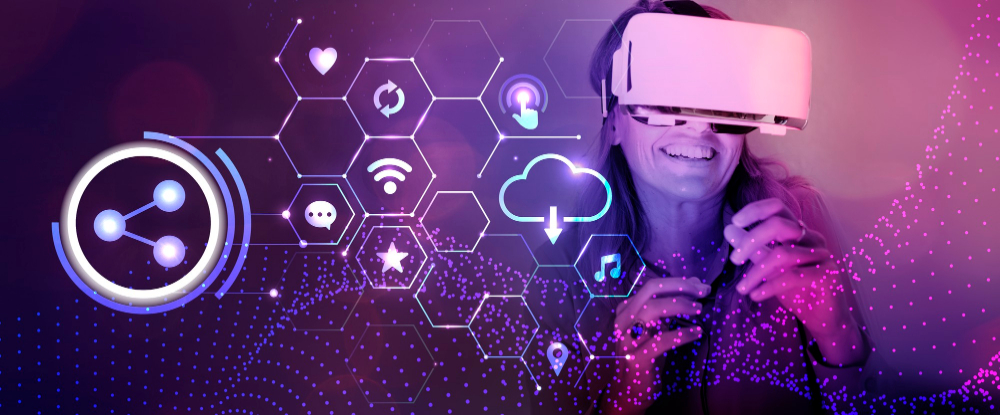- Blog
- October 15, 2025
Top tech trends to watch in 2026

- Blog
- October 15, 2025
Top tech trends to watch in 2026
As 2026 approaches, transformative technologies such as advanced artificial intelligence and groundbreaking quantum computing are set to revolutionize industries worldwide. These emerging tech trends promise to streamline operations, drive sustainable growth, and unlock new business opportunities. Organizations that stay ahead by understanding and adopting these innovations early will secure a decisive competitive edge in the fast-evolving digital landscape.
-
Agentic AI becomes proactive
Autonomous AI agents will evolve beyond simple chatbots to become fully proactive digital collaborators capable of executing end-to-end business processes. These systems will manage scheduling, coordinate supply chains, analyze market shifts, and initiate routine transactions without human intervention. By learning organizational objectives and anticipating user needs, agentic AI frees teams to focus on strategic and creative work. Investments in these platforms are forecast to surge over 60 percent in 2026, highlighting enterprise confidence in AI’s ability to boost productivity and innovation while reducing operational overhead.
-
Quantum computing hits maturity
After years of laboratory breakthroughs, quantum computers are on track to demonstrate clear commercial advantages by 2026. Fault-tolerant machines with over 100 logical qubits and advanced error-correction will begin tackling complex optimization, molecular modeling, and cryptographic challenges that stymie classical systems. Early adopters in pharmaceuticals, finance, and logistics will gain faster simulations and risk models, setting new performance benchmarks. Forward-thinking enterprises should prepare by integrating quantum-ready workflows into hybrid cloud environments, ensuring a seamless shift when quantum-as-a-service offerings mature.
-
Sustainability drives tech adoption
Environmental responsibility is transitioning from voluntary corporate citizenship to a strategic imperative. In 2026, sustainability tech will encompass AI-powered emissions monitoring, carbon-aware cloud infrastructures, and circular-economy frameworks that emphasize device refurbishment and materials recycling. Real-time analytics will optimize energy distribution in data centers and manufacturing plants, helping organizations meet net-zero targets without sacrificing performance. As governments tighten regulations and consumers favor eco-friendly brands, companies that embed green practices into their technology stacks will reduce costs, enhance reputation, and unlock new market opportunities.
-
Extended Reality (XR) goes mainstream
Augmented and virtual reality solutions will cross the threshold from niche experimentation into everyday enterprise tools. Advances in display resolution, lightweight form factors, and haptic feedback will enable hyper-immersive training simulations, remote maintenance assistance, and virtual product demonstrations. Retailers will offer customers the ability to “try before you buy” through realistic AR overlays, while educators will leverage VR to transport students to historical sites or microscopic environments. By combining XR with real-time data feeds and AI-driven personalization, organizations will enhance learning outcomes, boost sales conversions, and reduce operational risks.
-
Edge computing accelerates insights
Driven by the global rollout of 5G and explosive growth in connected devices, edge computing will process three-quarters of enterprise data outside centralized data centers by 2026. This decentralized approach slashes latency, enabling split-second decision making for autonomous vehicles, industrial robotics, and telemedicine. Local processing also enhances data privacy and reduces bandwidth costs by filtering and analyzing information at the source. Enterprises will adopt hybrid architectures that blend on-premises, edge, and cloud resources to achieve optimal performance, resilience, and regulatory compliance in regions with strict data sovereignty laws.
-
Cybersecurity evolves with AI
As threat actors leverage AI to conduct deepfake phishing, autonomous malware deployment, and sophisticated ransomware-as-a-service campaigns, defensive measures must evolve in kind. In 2026, security teams will deploy AI-driven detection systems that identify anomalies in network behavior, user access patterns, and API interactions in real time. Automated incident response platforms will isolate affected systems and remediate vulnerabilities before human teams can respond. Simultaneously, organizations are preparing for the quantum era by piloting quantum-safe encryption protocols to protect sensitive data against future decryption attempts, ensuring long-term confidentiality and trust.
-
Biotech embraces digital transformation
The biotechnology sector will undergo a digital renaissance as AI, cloud computing, and high-performance data analytics accelerate drug discovery and personalized medicine. Generative AI models will predict molecular structures, reducing candidate screening times from months to weeks. Cloud-based collaboration platforms will enable global research teams to share large datasets securely, while machine learning algorithms optimize clinical trial designs by identifying ideal patient cohorts and predicting efficacy. Regulatory bodies will adopt real-time data pipelines for faster, more transparent approval processes. These advances promise to deliver therapies faster, improve patient outcomes, and lower R&D costs.
-
5G expands, 6G R&D gathers pace
By 2026, 5G networks will offer near-ubiquitous coverage in urban centers and critical industrial zones, powering high-bandwidth applications in manufacturing, logistics, and entertainment. Private 5G deployments will provide secure, low-latency connectivity for smart factories and campus networks. Concurrently, research into 6G technologies—envisioning terahertz frequencies, AI-native network management, and seamless integration with satellite constellations will accelerate. Enterprises should future-proof their connectivity strategies by investing in software-defined network architectures that can adapt to evolving standards, ensuring smooth migrations from 5G to next-generation systems when they commercialize.
-
Synthetic media proliferates
AI-generated content will account for up to 90% of digital media by 2026, spanning text, images, audio, and video. Automated tools will produce marketing campaigns, personalized product demos, and virtual influencers at scale, democratizing content creation but challenging authenticity. Businesses must implement verification frameworks using blockchain, digital watermarking, and algorithmic provenance checks to distinguish genuine materials from synthetic imitations. Organizations that balance rapid, cost-effective media production with robust trust mechanisms will safeguard brand integrity while engaging audiences in novel ways.
The technological currents of 2026, including agentic AI, commercial quantum computing, sustainability tech, XR, edge computing, AI-powered security, biotech digitization, next-gen networks, and synthetic media, will converge to redefine industry boundaries and business models. Success in this transformative era requires an integrated approach: embracing innovation, safeguarding ethics and security, and aligning digital initiatives with environmental and social responsibilities. Organizations that anticipate these trends, cultivate adaptable infrastructures, and foster a culture of continuous learning will not only survive but thrive in the digital-first world of 2026.




